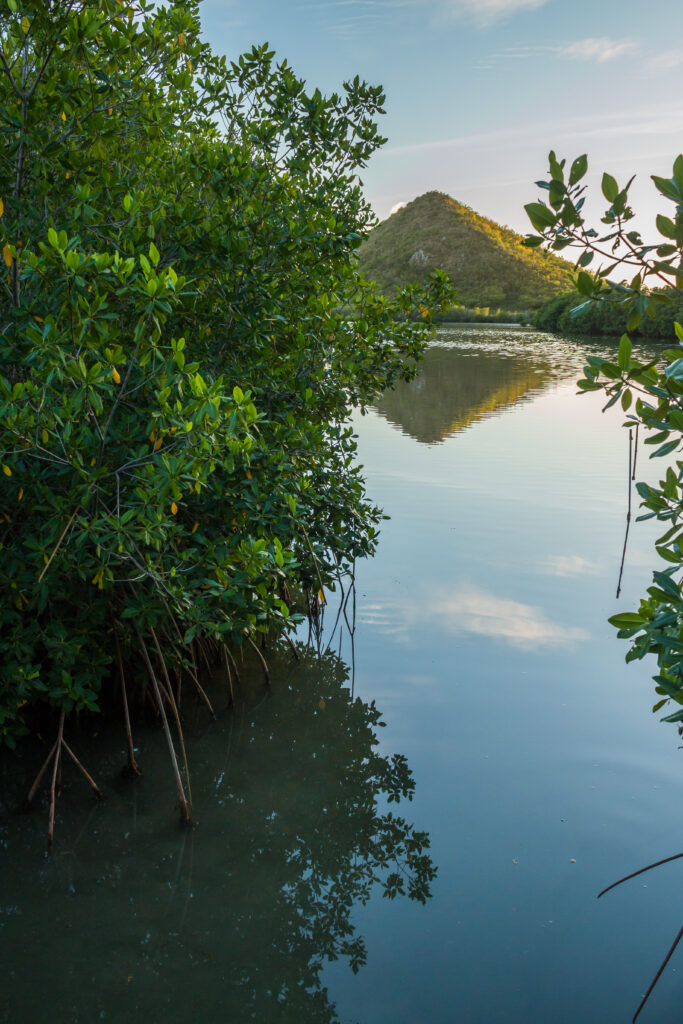
Antigua and Barbuda, a once forested country, boasted unique species of parrots, owls, snakes, lizards and plants. In the 1700s as colonisers settled, they inadvertently brought invasive alien species with them: black and brown rats. These rats had no predators in Antigua and Barbuda and so their populations grew exponentially. Rats prey on the eggs and young of many animals, seeds, bark, roots, and fruit. In short, rats are highly destructive to locally occurring biodiversity.
To curb the terrible rat problem on the island, the settlers introduced another terribly invasive animal, the small Asian mongoose. But alas, the intended eradication of rats by the mongoose was not to be. Rats are active mostly in the night and mongooses during the day, so instead of targeting the rats, the mongooses preyed upon local wildlife that also preferred the daytime hours. Meanwhile, the rats continued their destructive night-time activity. Our islands’ relatively gentle natives never stood a chance. Among the victims of this massacre were burrowing owls, yellow-breasted crakes, mountain chicken, the curly tailed lizard, the Lesser Antillean Iguana, the Antiguan Parrot, which can no longer be found in our country, except for the Antiguan Racer, which can be found on a few small offshore islands.
This sad state of affairs continues on the mainland where landbirds and other wildlife can face localised extinction due to loss of habitat and increased exposure to the destructive natural elements because of human activity. This in addition to constant predation by rats, mongooses, and yet another pair of non-native animal species, cats and dogs. The Barbuda Warbler, a species only found in and endemic to Barbuda, was feared lost after the catastrophic damage caused by Hurricane Irma in 2017. Fortunately, surveys discovered that they had survived.
Going further, in our waters, four species of sea turtles can be found: Green, Loggerhead, Leatherback, and most well-known, the Hawksbill turtle. Of these four species, only the Loggerhead does not nest on our beaches. The leatherback turtle is the largest turtle in the entire world, measuring up to six feet and weighing up to 1,100 pounds. Turtles face a multitude of threats. In the Caribbean, men believe that turtle eggs possess aphrodisiac powers. Rats, mongooses, dogs and cats are among the predators that dig up nests and eat the eggs. Hatchlings are guided to the sea by moonlight reflecting off the ocean’s surface. Unfortunately, the white tinted lights that are often found on houses or streetlamps close to beaches have the same effect, disorienting them and leading them towards roads. Prior to the installation of red-tinted lights along the roadways at Jabberwock and Darkwood beaches, many hundreds of hatchlings per year met their death under the wheels of passing vehicles. Also, people use the shells (which is actually a part of the turtle’s skeleton) to make jewellery. The turtle cannot survive without its shell. Turtle meat is also consumed, although it is illegal to hunt turtles. Further to this, turtles, once plentiful in our waters, also deal with boat strikes and drowning in fish nets.
We humans have some responsibility for the endangerment of sea life such as parrotfish, lobster, conch, and others. Overfishing has reduced the ability of their populations to replenish by reproduction. Their habitats, such as coral reefs, are being destroyed due to climate change driven by human activity. Mangroves, which serve as nurseries for fish and other sea life, are under constant threat of destruction.
There has been some positive response to this troubling situation. The area of the Antigua and Barbuda archipelago that stretches from Beggars Point (close to Prickly Pear Island) to York Island by Half Moon Bay, also known as the North East Marine Management Area, is a Marine Protected Area. It has the international designations of Key Biodiversity Area and Important Bird Area, and rightly so. It is on these mostly undisturbed and flourishing islands that many of the seabirds will come in and nest during the breeding season. It is on some of these islands that our once abundant Antiguan racer can still be found, thanks to the eradication of rats and mongooses from these islands.
The Environment Protection and Management Act also lists many of our endemic plants and animals as protected, making it illegal to harm them. Several of these species – both plant and animal – can be found on Redonda, which also has undergone an eradication of the rats that once were there. In addition, Antigua and Barbuda’s closed seasons for Nassau grouper, red coney, and hind (January 1 to March 31), parrotfish (May 1 to July 31), lobster (May 1 to June 30), and conch (July 1 to August 31) give them time to replenish their populations.
Both the Offshore Islands Conservation Programme and conservation work done on Redonda have shown without a doubt that it’s possible to bring critically endangered species back from the brink of extinction. It’s important that everyone in our beautiful island state understands the treasure we have and resolve to protect it. Otherwise, what will we have to offer to our future generations?


